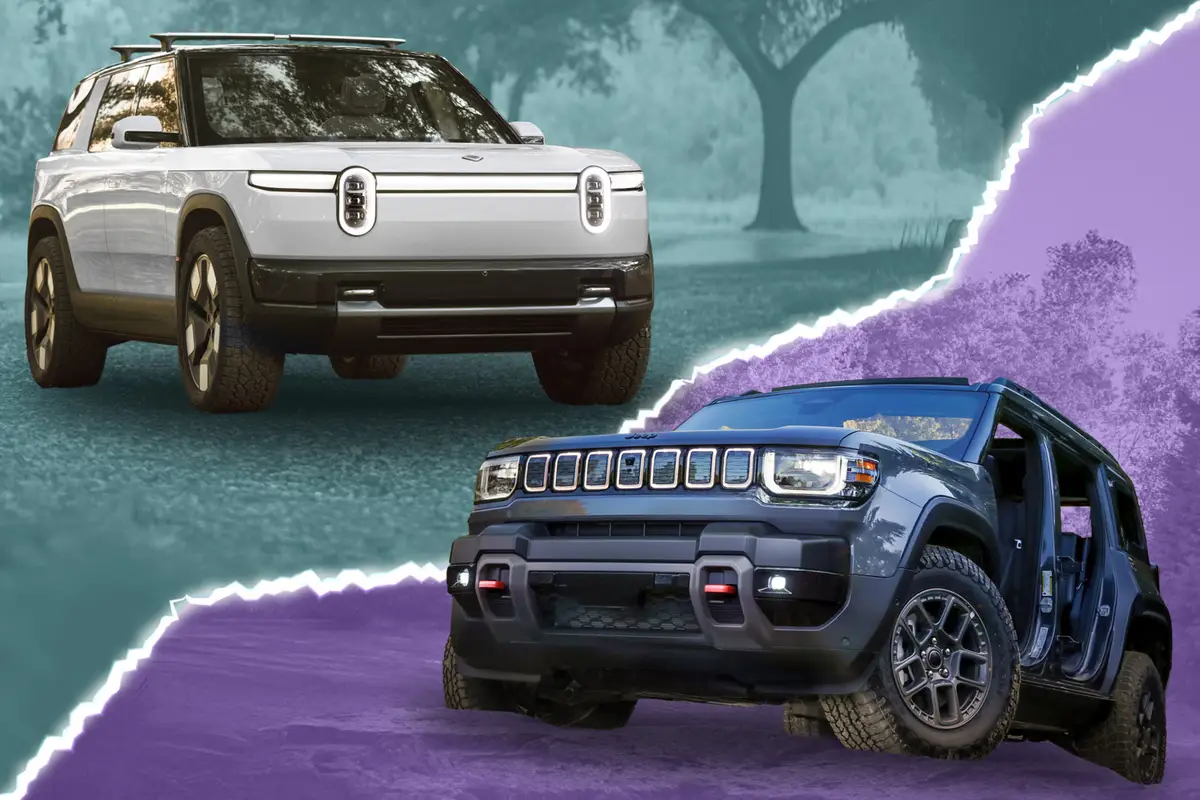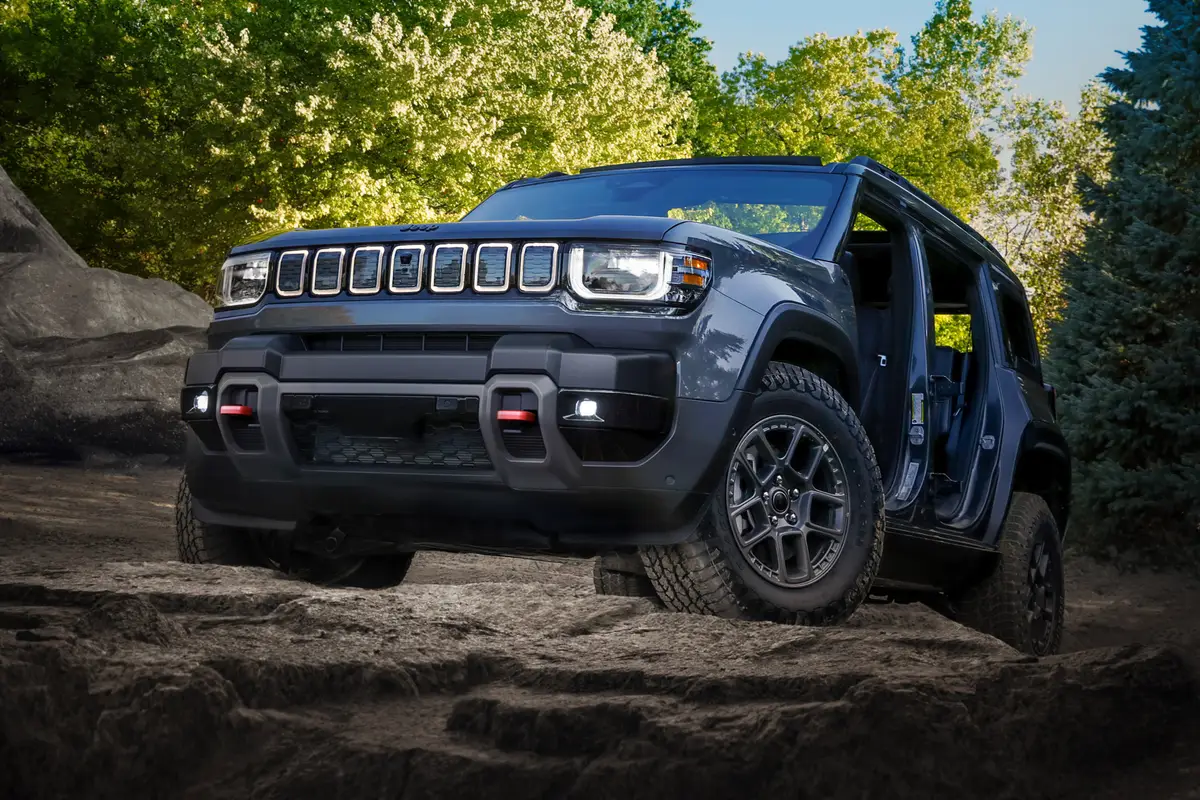The Morning Call and Mcall.com's view
To explain the new Buick Reatta, perhaps it would be best to define it. This, however, is not as easy as it may first appear.
Depending on how one looks at it, the new two-passenger coupe could either be a sports car with a lot of luxury or a luxury car with a lot of sport. Then, too, it could be something else. It is just a little too big and convenient to be a sports car. However, its performance and handling is just too good not to be a sports car.
The sports car label is not a label many manufacturers want to put on a car. Sports car generally conjures images of noise, hard ride and a struggle to get in and out. Also, insurance companies have no sense of humor when it comes to a sports car. As one local agent said: ”Sports car is a four letter word around here.”
Buick, itself, hints at all kinds of sportiness but describes it as a luxury two-passenger car. So, who’s to argue? The individual buyer, though, will have the last word. He/she can call it anything they so desire.
Not as confusing as its definition, is its appearance; the Reatta is one good looking car. The test car (supplied by Kelly Buick, State Road, Emmaus) turned many heads. It also slowed and stopped traffic on occasions when parked. And even though not many of those interested could pronounce its name, quite a few knew what it was.
To get the name out of the way quickly, it is pronounced Ree-OTT-ah and according to Buick, Reatta is derived from a Spanish-American word (reata or riata) for lariat. But why? Again, according to Buick, one of the car’s designers remembered the name from his childhood on western ranches. The name was used unofficially by the car’s developers for several years before it was finally selected in the summer of 1986. This may not be the silliest reason for naming a car but it certainly could rank among the top three.
Anyway, the Reatta, as with most people, is stuck with a name someone else gave it.
The design is definitely aerodynamic, though it is not just another General Motors clone. It has its own individual look and personality. The rounded front end has what is known as a bullet nose and the sloping hood houses retractable headlamps located above a ”bottom breather” grille. From the driver’s seat, the hood disappears from sight about three feet from the front of the bumper. So, it does take a little attention when parking or pulling up to a barrier. (No, I did not bump the front end but I did come embarrassingly close on the car’s first outing.)
The rear end is also rounded and gracefully tucked in around the tail lamp housings. In between the front and rear are smooth sides and a glassy greenhouse with just enough roof and roof pillars to provide a covering. All of the exterior body panels except the roof and front fenders are made of steel electrogalvanized on both sides for rust protection. The roof is not galvanized but then it is doubtful if it is going to rust-out. Rather interestingly, the front fenders are constructed of a thermoplastic material known as GTX, designed to protect against stone dings and low-impact damage.
Although a two-seater, the Reatta is not as small a car as its dimensions bear out. The wheelbase measures 98.5 inches, length, 182.8 inches; width, 73 inches; height, 51.2 inches, and it has a curb weight of 3,350 pounds. The two seats, covered in leather and suede, are generously sized and will accommodate in comfort all but the very extreme. These seat tops do not lock, which makes access to the rear convenient. However it is somewhat distracting on hard braking with an empty passenger seat, in other words, hit the brakes hard and the passenger seat top comes forward.
The door opening and seat position were obviously designed for easy entrance and egress. No sports car throw-yourself-in and bail-yourself-out maneuvers needed here. In addition to a trunkm asuring 10.3 cubic feet, there is also plenty of behind-the-seat storage room for luggage or gear. There are also two lockable storage compartments and a fold-down partition (also lockable) that provide access to the trunk and can accommodate long objects (fishing rods?).
Behind the wheel, the driver looks straight ahead into a somewhat barren instrument panel featuring digital speedometer, clock and trip odometer and fuel gauge. Have no fear, though, there are plenty of other instruments and things to read (perhaps more information than one would care to know) to the right in the electronic control center. Here climate and entertainment controls, engine instrumentation including tachometer, a trip computer, service diagnostics and other functions are controlled by using a touch- sensitive CRT screen.
This electronic control center is taken from the Riviera and almost defies description. Or reason. Obviously it saves room but it certainly doesn’t save effort. Tuning the radio, for example, almost requires a co-pilot. It is one of these drawn-out computer step-by-step procedures that makes one long for the days of knobs. Adjusting the air conditioner/heater is also a study in excess. And since it is a touch sensitive system, wrong controls – or, not the control one may have in mind – are invariably hit. But, no doubt, the control center will impress passengers.
Once past the control center, the Riatta is a real treat to drive. Handling is responsive and power is plentiful.
The four-wheel independent Gran Touring suspension on this front-wheel drive car features MacPherson struts and an anti-roll bar up front, struts, semi-trailing arms and a Corvette-type transverse leaf spring with anti-roll bar in the rear. All-season P215/65R15 Eagle GT+4 tires are mounted on 15- by 6-inch five-spoke aluminum wheels. Steering is fast-ratio power rack-and- pinion. But, perhaps, most impressive is the Anti-lock Braking System (ABS) used with four-wheel disc. I’ve written about and praised ABS so often that even I’m getting tired of hearing about it. But essentially, ABS is a safety device that, as the name implies, keeps the brakes from locking up. This in turn allows for straight-on-the line braking under various road conditions and, equally importantly, steering control, even if the brake pedal is to the floor.
Anyway, the test car ran the back roads as if it belonged there. The suspension is not quite as tight as most sports cars and the Reatta will lean a little in tight situations, but if you aren’t bothered, either is it.
Powering the front-wheel drive Reatta is the 3800 V-6, the latest version of the 3.8-liter/231-cubic-inch V-6 that was pioneered and developed by Buick Motor Division. Buick is proud of this engine, and well it should be. Buick introduced the first version of this V-6 some 25 years ago on its Buick Special and has been refining the engine ev er since. This engine is also used in many other General Motors cars.
The 3800 is rated at 165 horsepower at 4,800 rpm and 210 pounds torque at 2,000 rpm. Compared to last year’s 3.8 V-6 (as well as this year’s standard 3.8), horsepower is up 10 percent, torque up 5 percent and the torque curve is fattened at the outer end for improved mid-range performance and higher rpm driving.
Together with the standard four-speed automatic transmission, performance is impressive as well as fuel mileage. Stab that accelerator and those front tires will churn up. And if you keep speeds somewhat under control, fuel mileage won’t shock you. The test car averaged 15 miles per gallon for city driving and 24 mpg over the highway. Since the compression ratio is a relatively low 8.5:1, unleaded regular can be used.
The Reatta only comes one way, fully equipped. You name it, it probably has it. The price is a flat $25,000. Add $525 for destination and you have $25,525. A little pricey for a car but not bad for a toy. The only two options available are sunroof and 16-way power seat .
Latest news



